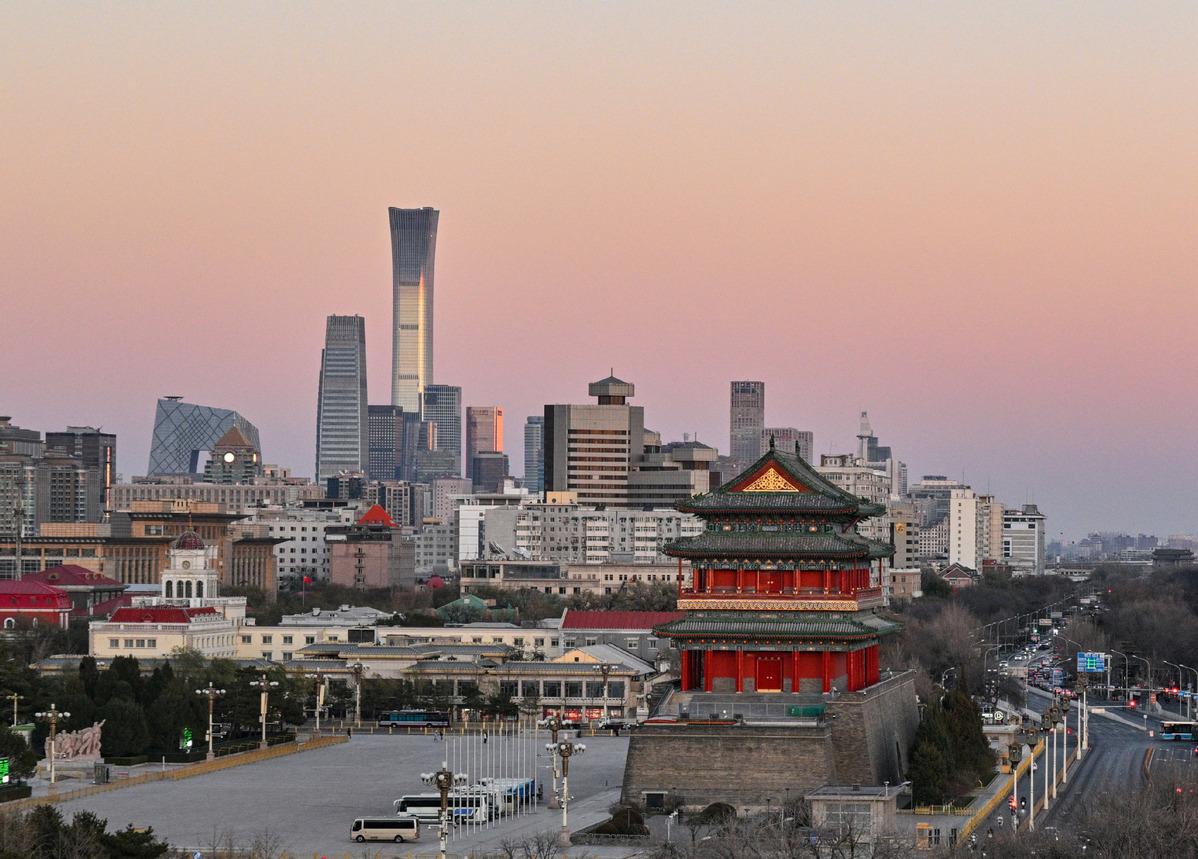
 0 Comment(s)
0 Comment(s) Print
Print E-mail China Daily, August 1, 2024
E-mail China Daily, August 1, 2024

A view of Beijing's CBD area on Nov 29, 2023. [Photo/Xinhua]
China's economic recovery is expected to gain a firmer footing in the remainder of the year, as policymakers are poised to roll out a package of stimulus measures aimed at stabilizing growth and deepening structural reforms in the second half, analysts said on Wednesday.
They said the focus will be placed on defusing local government debt risks, expanding domestic demand and stabilizing the real estate sector, which will help to significantly boost confidence among investors, consumers and businesses.
Their comments came as official data released on Wednesday showed a mixed picture of the economy, with China's factory activity shrinking for the third consecutive month in July and the nonmanufacturing sector expanding at a slower pace.
A State Council executive meeting held on Wednesday emphasized the need to optimize and strengthen macro policies, calling for efforts to better implement existing policies and mull new incremental policies.
The Political Bureau of the Communist Party of China Central Committee held a meeting on Tuesday to analyze the country's economic performance. The meeting pledged to step up macroeconomic support in the second half of the year, with greater focus on expanding domestic demand, cultivating emerging sectors and further widening opening-up, in a bid to meet the nation's annual growth target for 2024.
Analysts said the latest PMI readings offer a glimpse of challenges and pressures facing the economy, as data from the National Bureau of Statistics showed that China's official purchasing managers index for the manufacturing sector stood at 49.4 in July, down from 49.5 in June. This is below the 50-point mark that separates growth from contraction.
China's nonmanufacturing PMI, which includes subindexes for service sector activity and construction, came in at 50.2 in July, down from 50.5 in June, NBS data showed.
Yang Xin, an analyst at Hongta Securities, said the latest PMI readings point to pressures from the still-weak domestic demand, highlighting the need for stepped-up macroeconomic support to prop up the world's second-largest economy.
"Factors affecting the readings include extreme weather events such as heat waves and floods, the traditional offseason for industrial production in July, the existing trends of deglobalization, and declining property sales," Yang said.
Citing key measures mapped out at Tuesday's meeting, Wang Qing, chief macroeconomic analyst at Golden Credit Rating International, said he expects to see a series of measures aimed at stabilizing the growth in the second half, including an accelerated push for issuing local government bonds in the third quarter.
"We estimate that the official manufacturing PMI may rise to around 49.7 in August, and we need to keep an eye on the correction in the housing market," he said.
NBS data showed that China's economy grew 5 percent year-on-year in the first half, which is consistent with the country's preset annual growth target of around 5 percent for 2024. In the second quarter, China's GDP grew 4.7 percent year-on-year, cooling from 5.3 percent growth in the first quarter.
"To achieve the annual growth target, China's second-half GDP growth rate should hit about 5 percent," said Xiong Yuan, chief economist at Guosheng Securities, who estimated that the economic recovery may pick up pace in the third quarter, bolstered by a recovery in investment and robust export performance amid strong policy stimulus.
"Policymakers will likely roll out stimulus measures in the near term, including speeding up the issuance and use of local government special bonds, reducing the reserve requirement ratio and interest rates, defusing local government debt risks, and employing further property easing steps," Xiong added.
Louise Loo, lead economist at British think tank Oxford Economics, warned that the broader economy is still facing headwinds from sluggish consumer spending, rising tariff risks and disinflationary forces, which will likely more than offset stimulus tailwinds in the near term.
"We expect the People's Bank of China, the country's central bank, to cut its benchmark rates again in the fourth quarter, and also in the first quarter of 2025, thereby leading to a lower terminal rate in the medium term," she said.
On the property front, Loo said that key housing activity indicators have shown no signs of troughing despite the feedthrough of unprecedented measures focused on destocking the large property inventory overhang.
"More efforts to expand the scope of facilities catered toward clearing the excess housing supply and encourage marginal homebuyer demand are necessary, and now likely, in the coming months," she added.
Go to Forum >>0 Comment(s)